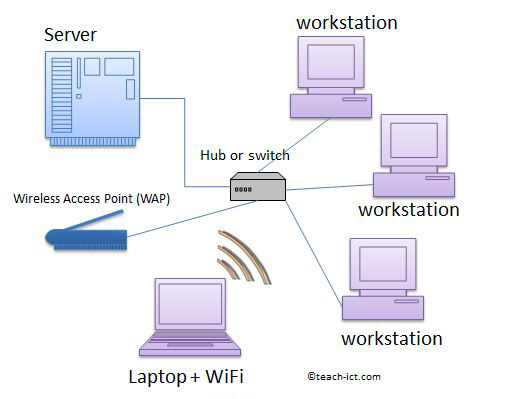2. Client-Server
There are two main ways of laying out a network:
- Client-Server
- Peer-to-Peer
In a Client-Server arrangement, most files and data aren't stored on individual computers. Instead, they are kept on a central 'server' that can be accessed by everyone. When someone wants to access or change a file, their computer sends a request to the server, and the server sends the relevant data back to them.
Individual workstations, or 'clients' connect to the server using a hub or switch (these are discussed in the network hardware section).

With all files kept on the central server, it's very easy to manage backups, security, and user authentication. The server controls the level of access that all client PCs have to the shared resources.
The downside of this setup is that if the server goes down, all data is lost and the network is unusable until it is fixed.
Challenge see if you can find out one extra fact on this topic that we haven't already told you
Click on this link: What is a client-server network?
